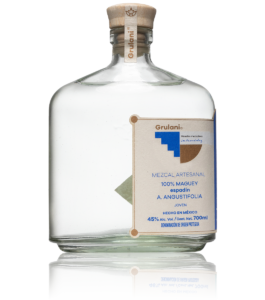The complexity of its sugars and the copious foam that Coyote produces during fermentation and distillation make this mezcal one of the most complex to produce in our catalog.
To create just a single bottle of Coyote, we need approximately 30 kg of this scarce and difficult-to-find maguey. Depending on whether it’s the rainy or dry season, Coyote is fermented for 2-4 days in pine wood vats and subsequently distilled three times in a copper still. The first distillation, or simple distillation, of Coyote can reach up to 30% ABV.
Process
-
100% Coyote magueys(Agave Americana)
-
Cooked in an earthen ovenfor 5 nights and 4 days
-
Crushed with a stone millpulled by a horse
-
Fermented for 2-4 daysin pine wood vats
-
Destiled three timesin a copper still
-
Adjusted with spring wateruntil reaching 46% ABV
Coyote is one of the most abundant varieties in the community of San Baltazar Guelavila and a specialty of master mezcalero, Leo Hernández. Coyote prefers to grow alone, and the average time for maturation is between 10 and 14 years. It has a medium-sized piña, and the Coyote maguey is characterized by its attractive, broad-based leaves with their small, sharp teeth at the edge.
The fibers extracted from Coyote’s leaves can be used to make rope, and its quiote, the flowering part of the agave responsible for its reproduction, can be dried and used to construct roofs, walls, and fences. Distilling coyote is a complex and labor-intensive process but the result is a spectacular conversion of aromas and flavors.









 Belgien
Belgien
 Deutschland
Deutschland
 España
España
 Österreich
Österreich
 Portugal
Portugal
 Schweiz
Schweiz
 Rest of Europe
Rest of Europe
 México
México

